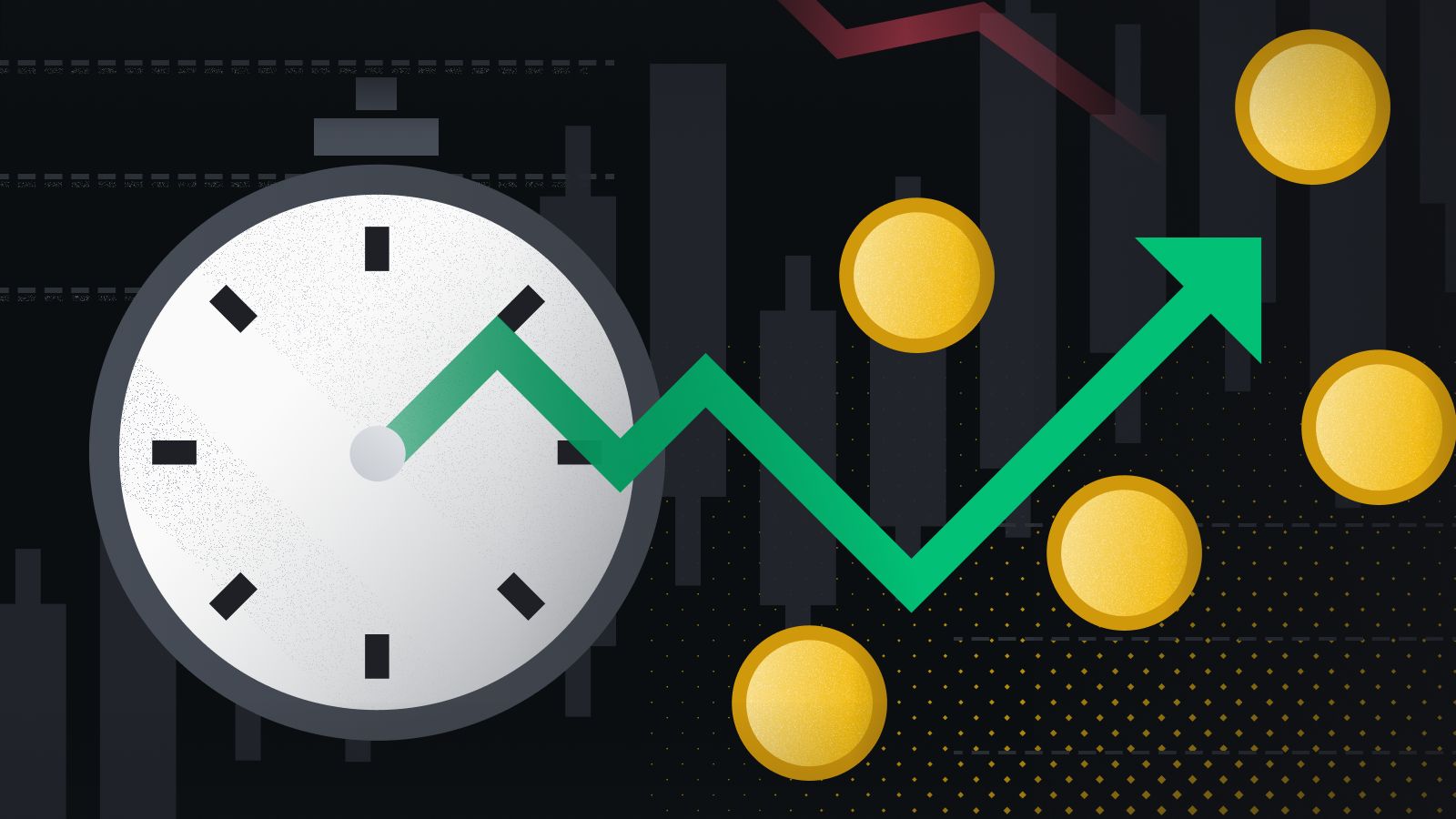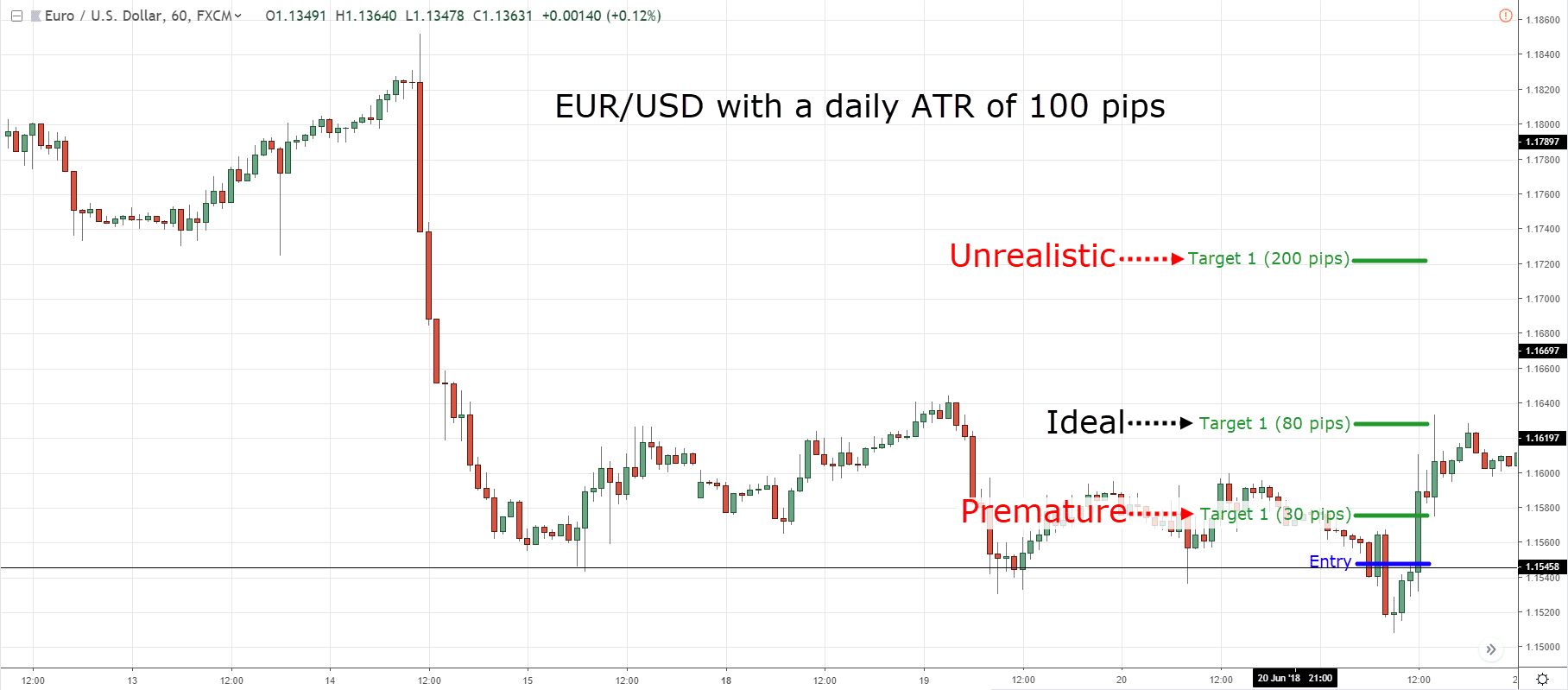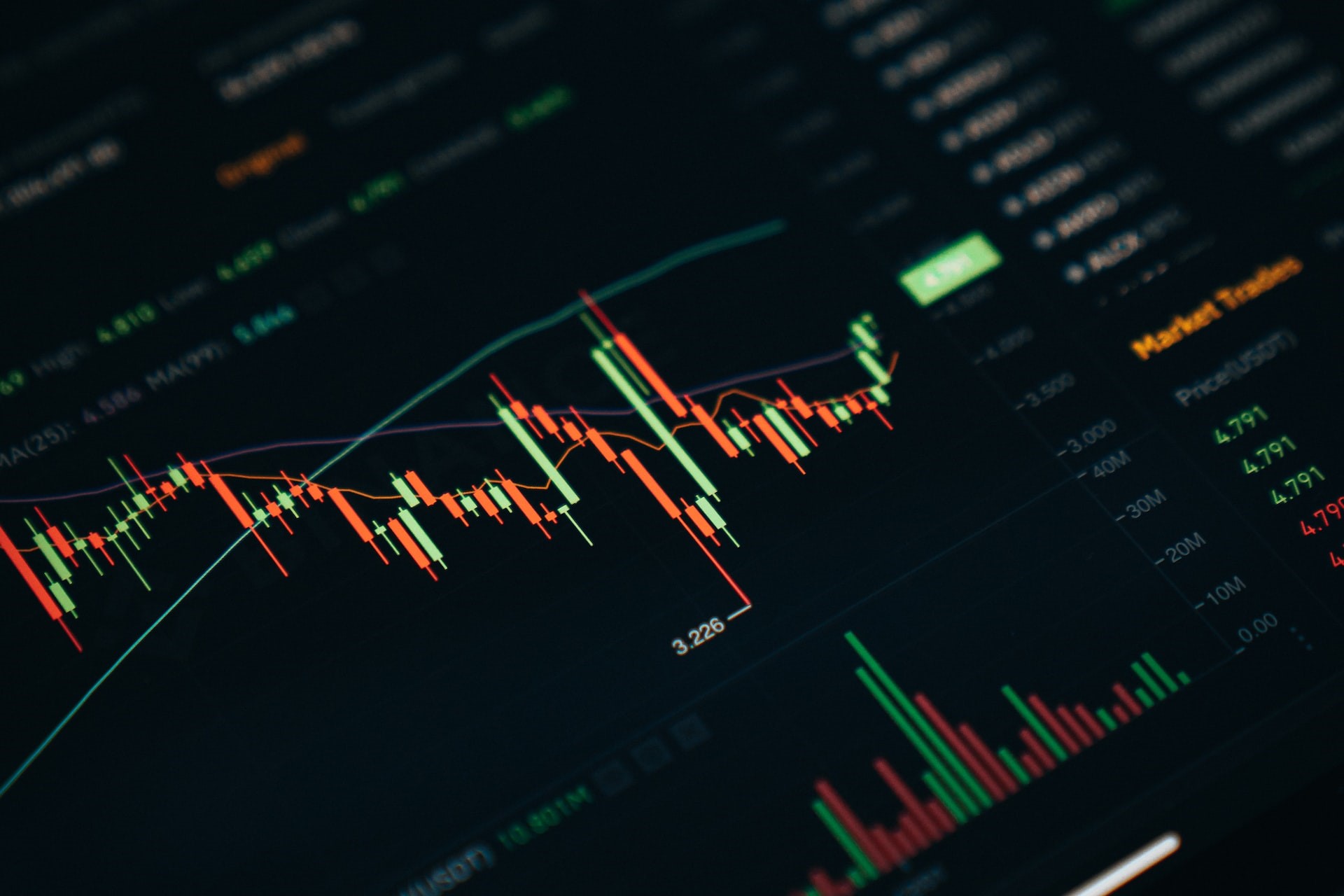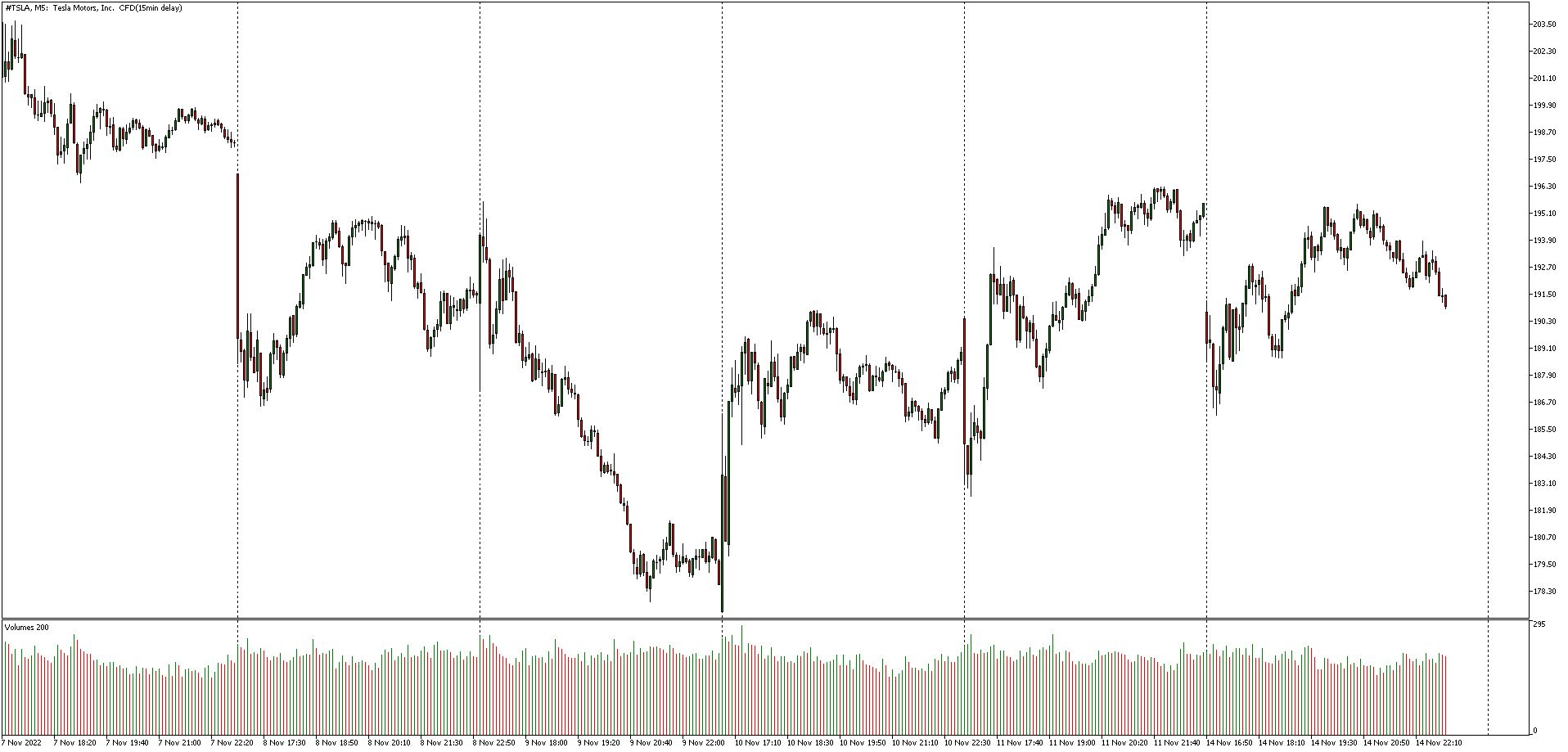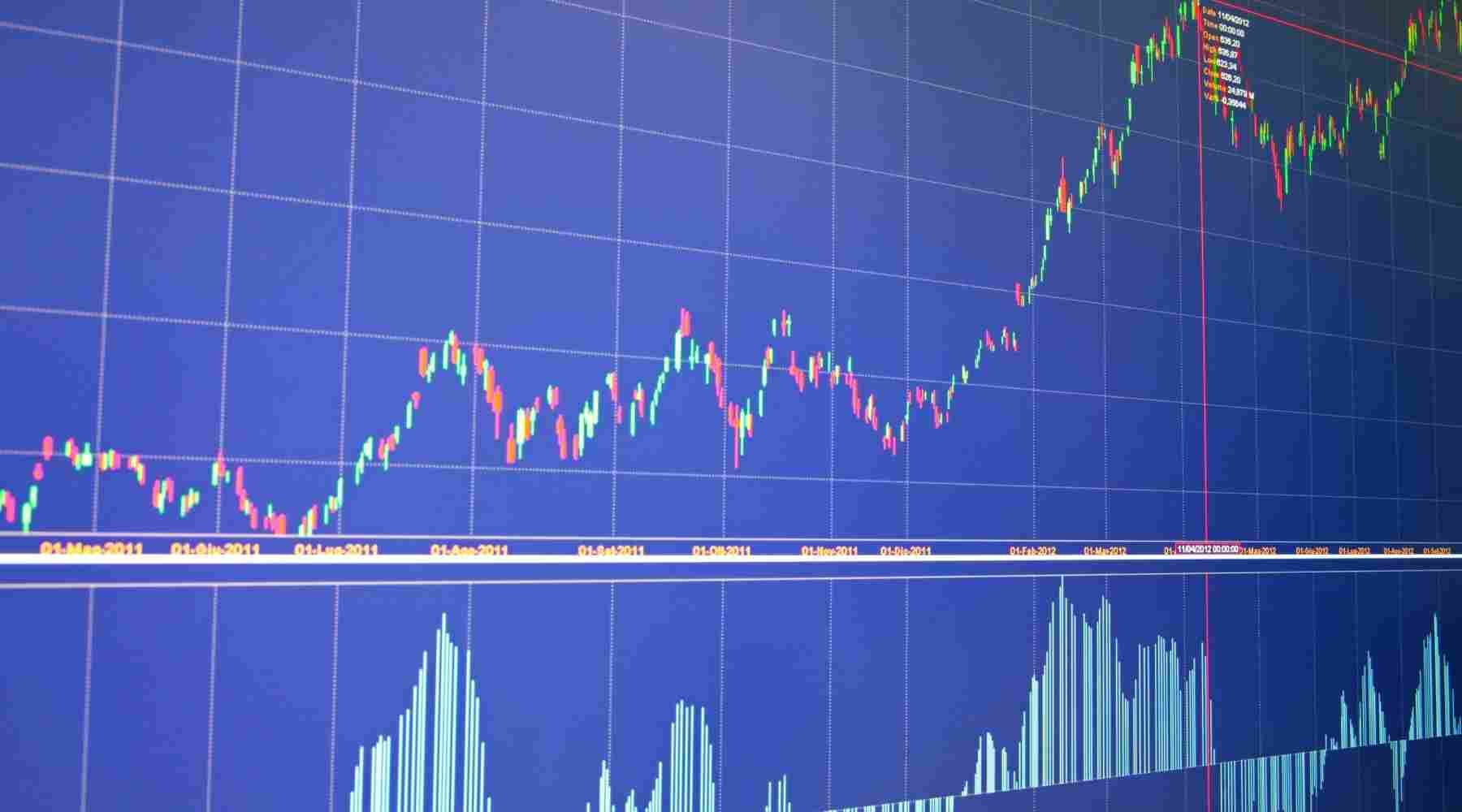Introduction
Welcome to the exciting world of day trading! If you are someone who is passionate about financial markets and dreams of making a living from your trading skills, then day trading might be the perfect fit for you. Day trading involves buying and selling financial instruments, such as stocks, currencies, or commodities, within the same trading day to capitalize on short-term price fluctuations.
With the advancement of technology and the widespread availability of online trading platforms, day trading has become increasingly accessible to individual traders. However, it is essential to understand that day trading is not a guaranteed pathway to instant riches. It requires knowledge, discipline, and continuous learning to navigate the volatile nature of the financial markets.
Before diving into the world of day trading, it is crucial to have a solid understanding of the factors that impact profitability and the strategies that can help you succeed. In this article, we will explore the key aspects of day trading, including risk management, trading strategies, and the amount of capital required to start. We will also discuss realistic expectations for income and provide examples of successful day traders and their earnings.
It is important to note that day trading carries a significant level of risk, and success is not guaranteed. Many traders experience losses, and it is crucial to approach day trading with a disciplined mindset and realistic expectations. It is also advisable to consult with a qualified financial advisor or seek professional training before engaging in day trading.
Now that we have set the stage, let’s delve deeper into the world of day trading and explore the factors that can influence your profitability and success in this exhilarating pursuit.
What is day trading?
Day trading is a form of active trading where individuals buy and sell financial instruments, such as stocks, currencies, or commodities, within the same trading day. Unlike traditional investors who hold their positions for longer periods, day traders aim to take advantage of short-term price movements to make profits. These trades are typically executed using online trading platforms that provide real-time market data and fast order execution.
One of the key characteristics of day trading is the focus on intraday price fluctuations. Day traders closely monitor the market throughout the trading day, looking for opportunities to enter and exit trades for small, incremental gains. They rely on technical analysis, charts, and various indicators to identify potential trading setups.
Unlike long-term investors, day traders do not hold positions overnight. At the end of each trading day, all their positions are closed, and they start with a clean slate the next day. This approach allows day traders to avoid overnight risks, such as market gaps or news announcements that could potentially impact their positions.
Another important aspect of day trading is leveraging. Day traders often use margin accounts offered by brokers, which allow them to trade with borrowed funds. This leverage amplifies both potential profits and losses. While it can increase the earning potential, it also increases the risk, making risk management vital for day traders.
Day trading requires a high level of focus, discipline, and mental agility. Traders need to closely monitor multiple stocks or other financial instruments simultaneously, execute trades quickly, and adapt to rapidly changing market conditions. It is a fast-paced and demanding endeavor that can be both exhilarating and stressful.
It is important to note that day trading is not suitable for everyone. It requires a significant time commitment, adequate capital, and a willingness to continuously learn and adapt to market dynamics. Day traders also need to have the psychological resilience to handle the inevitable losses that come with trading.
In the following sections, we will explore the various factors that can impact the profitability of day trading and discuss strategies that can help traders increase their chances of success. It is important to approach day trading with proper preparation, knowledge, and a realistic mindset to maximize the potential rewards while minimizing the risks involved.
Factors Affecting the Profitability of Day Trading
Day trading profitability is influenced by several key factors. Understanding and effectively managing these factors is crucial for increasing the chances of success in this fast-paced and competitive field. Let’s explore some of the most important factors affecting the profitability of day trading:
- Market Volatility: Volatility refers to the magnitude of price fluctuations in a given market. Day traders thrive in highly volatile markets as they provide ample opportunities for quick profits. Higher volatility allows for larger price swings, which can be capitalized on by skillful traders. However, it is important to note that increased volatility also brings higher risks and potential losses.
- Liquidity: Liquidity refers to the ease of buying or selling an asset without significantly impacting its price. Liquid markets have a high volume of trading activity, tight bid-ask spreads, and minimal slippage. Day traders generally prefer liquid markets as they offer better opportunities for entering and exiting trades at desired prices.
- Trading Strategy: A well-defined and tested trading strategy is essential for day trading profitability. Traders need to develop a systematic approach to identify potential trades, set entry and exit points, and manage risk. Whether using technical analysis, fundamental analysis, or a combination of both, a disciplined and consistent approach to trading is crucial.
- Risk Management: Proper risk management is vital in day trading. Traders should identify their risk tolerance and set appropriate stop-loss levels to minimize losses. Successful day traders often use risk-reward ratios to ensure that potential profits outweigh potential losses. Limiting the amount of capital at risk per trade and avoiding overtrading are also important aspects of risk management.
- Psychology and Emotions: The psychological aspect of trading plays a significant role in day trading profitability. Emotions like fear and greed can cloud judgment and lead to impulsive or irrational decisions. Successful day traders have the ability to control their emotions, stay disciplined, and stick to their trading plans even in challenging market conditions.
- Technology and Tools: Access to advanced trading platforms, real-time market data, and efficient order execution tools can significantly impact day trading profitability. Traders should ensure they have reliable and fast internet connectivity, as well as access to relevant news and analysis tools to stay informed and make informed trading decisions.
It is important to note that while these factors can influence day trading profitability, there are no guarantees for success. Day trading involves risks, and losses are a part of the trading journey. Traders should approach day trading with a realistic mindset, continuously strive to improve their skills, and be prepared to adapt to changing market conditions.
In the next section, we will delve deeper into the importance of risk management in day trading and discuss strategies to mitigate risks and protect capital.
Understanding Risk Management
Risk management is a critical aspect of day trading and is essential for preserving capital and maximizing long-term profitability. Day traders must have a thorough understanding of risk management principles and implement strategies to protect themselves from potential losses. Here are some key elements to consider when it comes to risk management:
- Risk Assessment: It is crucial to assess and understand the risks associated with each trade before entering it. This involves evaluating factors such as market volatility, liquidity, and the potential impact of news events or economic data releases. Traders should only take trades that offer a favorable risk-reward ratio and align with their overall trading strategy.
- Position Sizing: Determining the appropriate position size is an important aspect of risk management. Traders must allocate a percentage of their capital to each trade based on their risk tolerance and the potential loss in the event of a trade going against them. It is generally recommended to limit the amount of capital at risk per trade to a small percentage of the overall trading account to protect against significant losses.
- Stop-Loss Orders: Placing stop-loss orders is a crucial risk management tool for day traders. A stop-loss order is an instruction to sell a position if the price reaches a specific level, limiting potential losses. Traders should determine their stop-loss levels based on technical analysis, support and resistance levels, or other indicators. It is important to set stop-loss orders at a level that allows for a reasonable amount of price fluctuation while protecting against excessive losses.
- Take-Profit Orders: In addition to stop-loss orders, day traders should also consider implementing take-profit orders to secure profits. A take-profit order is an instruction to sell a position when the price reaches a specific level to lock in gains. Traders can set take-profit levels based on technical analysis, profit targets, or other indicators. By having a predetermined exit point, traders can avoid falling into the trap of greed and potentially giving back profits in volatile markets.
- Diversification: Spreading risk across different assets or markets can help reduce the impact of potential losses. Diversification allows traders to mitigate the risk associated with a single trade or sector. By allocating capital to multiple trades or different types of financial instruments, traders can minimize the impact of any individual trade or market event.
- Continuous Learning: Keeping up with market trends, learning new strategies, and staying informed are essential for effective risk management. Traders should continuously educate themselves about the markets they trade, explore new risk management techniques, and stay updated with relevant news and analysis.
Implementing sound risk management practices can prevent catastrophic losses and provide traders with a solid foundation for long-term success in day trading. It is crucial to define and stick to a risk management plan, adapt it as needed, and continuously evaluate and improve the effectiveness of risk management strategies.
In the next section, we will discuss various strategies that successful day traders employ to achieve consistent profits.
Strategies for Successful Day Trading
Successful day trading requires a well-defined strategy that helps traders identify high-probability trades, manage risk, and maximize profits. While there are various approaches to day trading, here are some commonly employed strategies by successful traders:
- Trend Following: This strategy involves identifying and trading in the direction of the prevailing market trend. Traders look for assets that are consistently making higher highs and higher lows in an uptrend or lower highs and lower lows in a downtrend. They aim to enter trades when the price retraces to a support or resistance level within the trend.
- Breakout Trading: Breakout traders focus on assets that are experiencing significant price movement and breaking out of a defined range or chart pattern. They look for breakouts above resistance levels or below support levels, with increased trading volume. Breakout traders aim to capitalize on the momentum generated by the breakout, often using tight stop-loss orders to manage risk.
- Scalping: Scalping is a short-term trading strategy in which traders aim to profit from small price fluctuations. Scalpers enter and exit trades rapidly, often within seconds or minutes, aiming to capture small but frequent profits. This strategy requires discipline and the ability to make quick decisions based on technical indicators and price action.
- Range Trading: Range traders look for assets that are trading within a well-defined price range. They aim to buy at the bottom of the range and sell at the top, taking advantage of price reversals within the range. Range traders use support and resistance levels, along with oscillators and other indicators, to identify potential entry and exit points.
- News Trading: News traders take advantage of significant market-moving news events, such as economic data releases or corporate announcements. They closely monitor news sources and react quickly to capitalize on price movements triggered by the news. News trading requires the ability to interpret news releases and act swiftly to enter or exit trades.
- Algorithmic Trading: Algorithmic or automated trading involves using computer programs or algorithms to execute trades based on pre-defined rules. This strategy uses technical indicators, mathematical models, and historical data to generate and execute trades automatically. Algorithmic trading can help eliminate emotional biases and execute trades with speed and precision.
It is important to note that each strategy has its own advantages and drawbacks, and it is up to the individual trader to determine which strategy best aligns with their trading style and risk tolerance. Moreover, successful day traders often combine strategies or modify them to fit their unique trading approach.
In addition to employing a specific trading strategy, successful day traders also place emphasis on continuous learning, maintaining discipline, and keeping their emotions in check. They constantly analyze their trades, identify patterns, and make adjustments to improve their performance over time.
In the next section, we will discuss the importance of choosing the right trading platform to facilitate efficient and effective day trading.
Choosing the Right Trading Platform
Choosing the right trading platform is a crucial decision for day traders as it directly impacts their ability to execute trades efficiently and effectively. A reliable and feature-rich trading platform can provide traders with essential tools, real-time market data, and a seamless trading experience. Here are some key factors to consider when selecting a trading platform:
- Reliability: The trading platform should be highly reliable and stable. It should be able to handle high volumes of trading activity without experiencing crashes or downtime. Unreliable platforms can lead to missed trading opportunities and potential losses.
- Order Execution Speed: Day trading requires fast and accurate order execution. The trading platform should have low latency and minimal delays in executing orders. Slippage can significantly impact profitability, so traders should choose a platform that can execute trades swiftly and precisely.
- Real-Time Market Data: Access to real-time market data, including price quotes, charts, and technical indicators, is essential for day traders. The trading platform should provide reliable and up-to-date market data, allowing traders to make informed decisions and act quickly on opportunities.
- Charting and Technical Analysis Tools: A robust trading platform should offer advanced charting capabilities and a wide range of technical analysis tools. Traders use charts to analyze price patterns, identify trends, and make trading decisions. The platform should provide customizable charts, drawing tools, and a variety of technical indicators to support effective analysis.
- Order Types and Risk Management Features: Day traders often require a variety of order types, including market orders, limit orders, and stop-loss orders. The trading platform should offer a comprehensive range of order types to facilitate precise trade execution. It should also provide risk management features, such as automatic stop-loss orders and trailing stops, to help traders manage their positions effectively.
- Mobile Trading: Mobile trading capabilities are essential for day traders who are on the go. A trading platform with a mobile app allows traders to monitor the markets, execute trades, and manage positions from their smartphones or tablets. The mobile app should offer the same functionality and features as the desktop version for a seamless trading experience.
- Customer Support: Reliable customer support is important in case traders encounter any technical issues or have questions regarding the trading platform. The platform should provide responsive customer support via various channels, such as phone, email, or live chat, to assist traders whenever needed.
It is advisable for day traders to explore and compare different trading platforms before making a decision. They can consider demo accounts or trial periods offered by platform providers to test the platform’s features and usability. Additionally, it is important to choose a platform that aligns with the trader’s trading style, preferences, and technical requirements.
The right trading platform can significantly enhance a day trader’s ability to execute trades efficiently, analyze the markets effectively, and manage risk. Traders should invest time in selecting a reliable and feature-rich platform to support their day trading activities.
In the next section, we will discuss the capital requirements for starting day trading and how to determine the appropriate amount of capital needed.
How Much Capital Do You Need to Start Day Trading?
The amount of capital you need to start day trading can vary depending on several factors, including your trading goals, trading strategy, risk tolerance, and the costs associated with trading. While there is no one-size-fits-all answer, here are some key considerations to help you determine the appropriate amount of capital:
- Complying with Minimum Requirements: Different regulatory bodies may impose minimum capital requirements for day traders. Ensure that you comply with the minimum requirements set by the jurisdiction in which you operate.
- Account Size: Your account size will have a direct impact on the number of trades you can make and the positions you can take. Larger account sizes provide greater flexibility and allow for more diverse trading opportunities.
- Day Trading Costs: Consider the costs associated with day trading, including commission fees, trading platform subscriptions, and market data fees. These costs can vary depending on your brokerage and trading platform. Make sure to factor them into your capital requirements.
- Margin and Leverage: If you plan to utilize margin and leverage, you will need to have sufficient capital to meet the margin requirements set by your broker. Margin accounts allow traders to trade larger positions with smaller amounts of capital, but they also increase the risk involved.
- Risk Tolerance: Your risk tolerance will influence the amount of capital you are willing to put at risk in each trade. It is generally recommended to risk no more than 1-2% of your trading capital on any single trade. Based on your risk tolerance, you can determine the minimum capital required to comfortably execute your trading strategy.
- Trading Strategy: Different trading strategies require varying levels of capital. Some strategies, such as scalping or high-frequency trading, may require larger capital due to the need for faster execution and more frequent trades. Conversely, strategies that focus on longer-term trends or position trading may require less capital.
- Psychological Comfort: It is important to have sufficient capital to feel psychologically comfortable while trading. Having a buffer in your account can help you avoid making impulsive decisions and reduce the emotional stress associated with day-to-day market fluctuations.
While it is possible to start day trading with a relatively small amount of capital, it is important to manage your expectations. Trading with limited capital may limit your ability to take advantage of all trading opportunities or diversify your portfolio. It is crucial to strike a balance between capital requirements and risk management.
Moreover, it is important to remember that day trading involves risks, and losses are a part of the trading journey. Starting with adequate capital that you can afford to lose without experiencing significant financial hardship is crucial. It is advisable to consult with a qualified financial advisor and do proper research before committing any capital to day trading.
In the next section, we will discuss realistic expectations for income from day trading and factors that can impact trading profitability.
Realistic Expectations: Average Income from Day Trading
When it comes to day trading, having realistic expectations for income is crucial. While some traders may achieve substantial profits, it is important to understand that day trading is not a guaranteed pathway to quick riches. The income potential from day trading can vary significantly based on various factors, including your trading experience, skill level, capital invested, and market conditions. Here are some key points to consider:
- Income Variability: Day trading income can be highly variable. Some days you may experience significant profits, while other days may result in losses. It is important to have a long-term perspective and focus on overall profitability rather than short-term gains.
- Market Conditions: Market conditions play a significant role in day trading income. Highly volatile markets or trending markets can present more opportunities for profits, while low volatility or choppy markets can make it challenging to find profitable trades.
- Experience and Skill Level: Your experience and skill level as a trader can impact your income potential. Seasoned traders who have developed effective strategies, mastered risk management techniques, and possess a deep understanding of the market may have a higher income potential compared to novice traders.
- Capital Invested: The amount of capital you invest in day trading can influence your income potential. Generally, the larger the capital, the greater the potential for profits. However, it is crucial to manage risk and not overextend your trading capital.
- Trading Costs: Trading costs, including commission fees, platform fees, and market data fees, can eat into your profits. It is important to consider these costs when determining your income expectations.
- Consistency and Discipline: Consistency and discipline are vital for successful day trading. Being able to consistently execute your trading strategy, sticking to risk management rules, and maintaining discipline in the face of market fluctuations are key factors that can influence your income potential.
- Continuous Learning and Adaptation: The ability to continuously learn, adapt, and refine your trading skills is crucial for improving your income potential. Successful day traders are constantly seeking education, analyzing their trades, and making adjustments to optimize their performance.
It is important to approach day trading with the understanding that it takes time, effort, and dedication to become consistently profitable. Setting unrealistic income expectations can lead to disappointment, frustration, and potentially risky trading behavior.
It is recommended to start day trading with the mindset of preserving capital, gaining experience, and gradually growing your income over time. Focus on building a solid trading foundation, honing your skills, and developing a trading strategy that suits your personality and risk tolerance.
Lastly, it is advised to consult with a qualified financial advisor or professional trader to gain insights on income expectations and strategies for day trading success.
In the next section, we will provide examples of successful day traders and highlight their earnings to illustrate the income potential in day trading.
Examples of Successful Day Traders and Their Earnings
While the income potential in day trading can vary greatly, there have been instances where successful day traders have achieved significant earnings. These examples can provide insights into the income potential but should not be taken as a guarantee of similar results. Here are a few notable examples:
- Paul Tudor Jones: Paul Tudor Jones is a renowned trader who successfully predicted the 1987 stock market crash. His hedge fund, Tudor Investment Corporation, has consistently generated impressive returns over the years. While exact earnings figures are not publicly available, it is estimated that Jones has amassed a substantial fortune through his trading expertise.
- James Simons: James Simons is a mathematician and founder of Renaissance Technologies, a quantitative trading firm. He applied complex mathematical models to analyze and predict market movements, leading to the phenomenal success of his firm. Simons is among the highest-earning hedge fund managers worldwide, with reported earnings in the billions of dollars.
- Tim Grittani: Tim Grittani is a trader known for his extraordinary journey from a small trading account to significant profits. Starting with around $1,500, Grittani focused on penny stocks and diligently honed his skills. Over time, he turned his initial investment into millions of dollars, showcasing the potential for substantial earnings with smart trading strategies and discipline.
- Andrew Aziz: Andrew Aziz, a writer and trader, authored the book “How to Day Trade for a Living,” and shares insights from his personal trading experience. While exact earnings figures are not disclosed, Aziz’s book and educational materials provide aspiring traders with valuable lessons on day trading strategies and achieving consistent profits.
- Steven Dux: Steven Dux is a well-known day trader who achieved remarkable success in trading low-priced stocks. He shares his journey and strategies through educational materials and online platforms. Dux reportedly transformed his initial $27,000 investment into millions of dollars, demonstrating the potential for substantial earnings with effective risk management and a focused trading approach.
These examples illustrate that day trading can lead to significant earnings when executed with skill, knowledge, discipline, and the ability to adapt to changing market conditions. It is important to note that these traders have invested significant time and effort to develop their trading acumen and have experienced both successes and failures along the way.
It is essential for aspiring day traders to approach these examples with caution and not solely base their income expectations on extraordinary success stories. Realistic expectations, continuous learning, and thoughtful risk management are key elements for day trading success.
Remember, the income potential in day trading can vary widely and is influenced by a multitude of factors. It is advisable to consult with professionals and conduct thorough research before embarking on a day trading journey.
In the next section, we will explore the tax implications of day trading and highlight important considerations for traders.
Tax Implications of Day Trading
When engaging in day trading, it is important to be aware of the tax implications associated with your trading activities. Tax laws and regulations vary by jurisdiction, so it is crucial to consult a tax professional or accountant who can provide guidance specific to your situation. Here are some general considerations regarding the tax implications of day trading:
- Capital Gains Tax: Profits generated from day trading are generally subject to capital gains tax. The tax rate may vary depending on the jurisdiction and the holding period of the investment. Short-term capital gains, which are gains from assets held for less than a year, are typically taxed at higher rates than long-term capital gains.
- Trader vs. Investor Status: The tax treatment may differ depending on whether you are considered a trader or investor by the tax authorities. Traders may be eligible for certain deductions and can claim business expenses related to their trading activities. To be eligible for trader status, you may need to meet specific criteria, such as regular and substantial trading activity and the intention to make a profit from short-term market movements.
- Mark-to-Market Accounting: In some jurisdictions, day traders with trader status are required to use mark-to-market accounting. This means that at the end of each tax year, all open positions are considered sold and repurchased at the year-end market value. This allows traders to realize gains or losses for tax purposes, even if the assets have not been physically sold.
- Record-Keeping: Proper record-keeping is essential for accurate tax reporting. Maintain detailed records of all your trades, including dates, prices, quantities, and expenses related to trading activities. This documentation will be critical for calculating accurate capital gains and reporting your income.
- Foreign Exchange (Forex) Trading: If you engage in forex trading as part of your day trading activities, be aware of the specific tax regulations applicable to forex trading. Forex trading may have unique tax considerations, including treatment of gains and losses, and it is important to consult with a tax professional familiar with forex trading taxation.
- Tax-Efficient Accounts: Depending on your jurisdiction, there may be tax-efficient accounts available for day traders, such as Individual Retirement Accounts (IRAs) in the United States. These accounts offer tax advantages, such as tax deferral or tax-free growth, but may have specific eligibility criteria and contribution limits.
- Tax Planning and Compliance: Understand the tax laws and regulations that apply to day trading in your jurisdiction. Seek advice from tax professionals to ensure compliance with tax obligations and maximize any available tax benefits. Regularly review your trading activities and tax situation to make necessary adjustments and stay compliant.
Day traders should prioritize tax planning and consult with a tax professional to navigate the complexities of tax regulations specific to their jurisdiction. By understanding the tax implications and fulfilling tax obligations, day traders can effectively manage their tax liabilities and avoid any potential penalties or legal issues.
In the final section, we will provide a brief summary and wrap up the key points discussed in this article on day trading.
Conclusion
Day trading offers an exhilarating opportunity for individuals seeking to potentially generate income from short-term market movements. However, it is important to approach day trading with a realistic mindset, understanding the risks and challenges involved.
In this article, we explored various aspects of day trading, including what it entails, factors impacting profitability, risk management techniques, strategies for success, choosing the right trading platform, capital requirements, income expectations, tax implications, and examples of successful day traders.
We emphasized the importance of understanding the factors that influence profitability, such as market volatility, liquidity, trading strategies, risk management, psychology, technology, and ongoing learning. Proper risk management is crucial for preserving capital and minimizing losses.
We discussed different trading strategies, such as trend following, breakout trading, scalping, range trading, news trading, and algorithmic trading. However, it is important to select a strategy that aligns with your trading style, risk tolerance, and expectations.
Choosing the right trading platform is vital for efficient trade execution, access to real-time market data, charting tools, and risk management features. Traders should evaluate platforms based on reliability, order execution speed, market data availability, and customer support.
We also considered the capital requirements for day trading, emphasizing the need to comply with minimum requirements and consider account size, day trading costs, margin and leverage, risk tolerance, and trading strategy.
Realistic income expectations are essential, as day trading income can vary significantly. It is important to manage risk, maintain discipline, and continuously learn and adapt to improve trading performance over time.
Additionally, we discussed the tax implications of day trading, highlighting the need for proper record-keeping, understanding capital gains tax, trader vs. investor status, mark-to-market accounting, and jurisdiction-specific regulations. Consultation with tax professionals is crucial for accurate tax reporting and compliance.
Ultimately, day trading can offer exciting opportunities, but success requires dedication, discipline, and continuous learning. By understanding the intricacies of day trading and implementing effective strategies, traders can increase their chances of achieving long-term profitability.
Remember, the information provided in this article is for informational purposes only and should not be considered as financial or investment advice. It is advisable to seek professional guidance and conduct thorough research before engaging in day trading or making any trading decisions.









